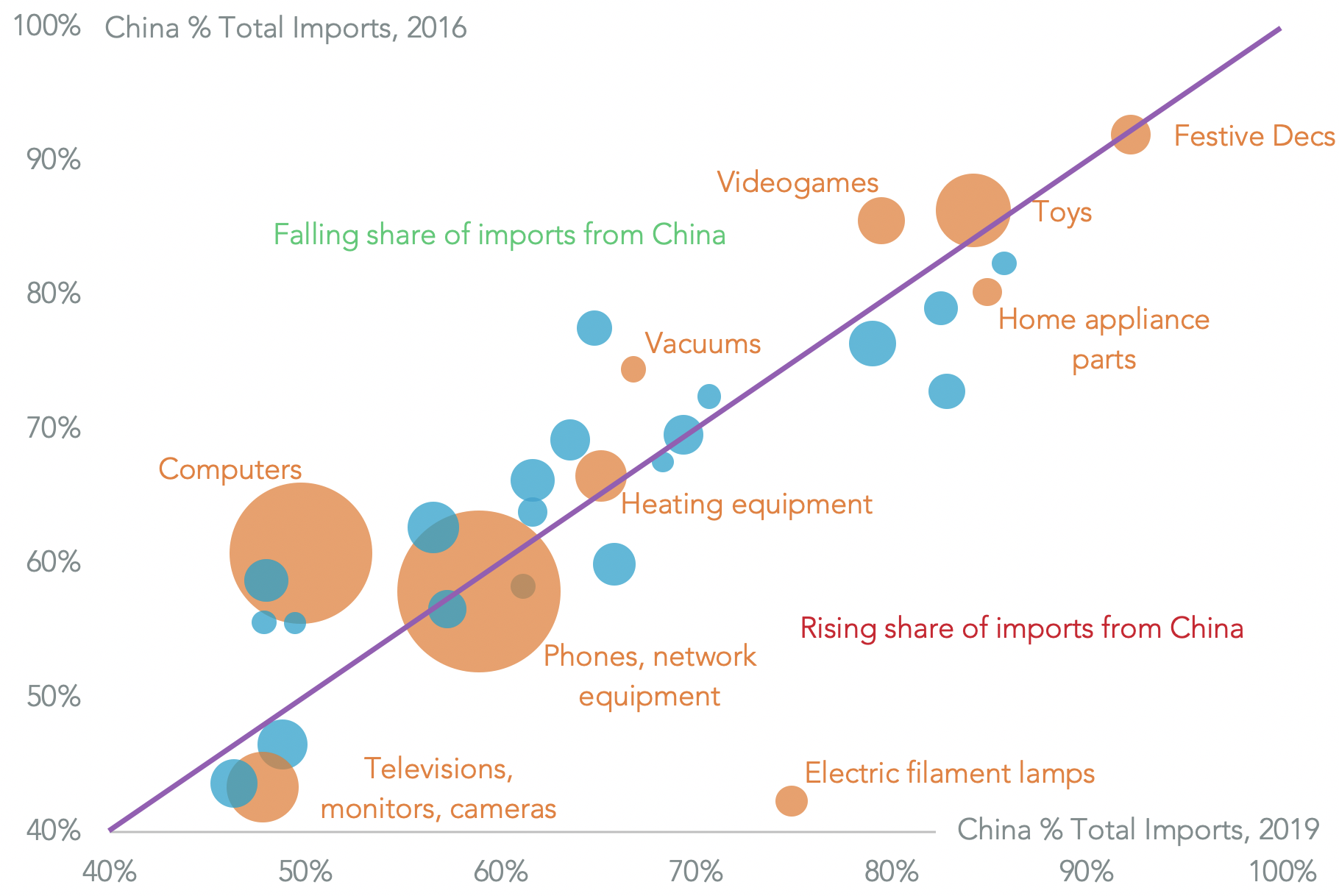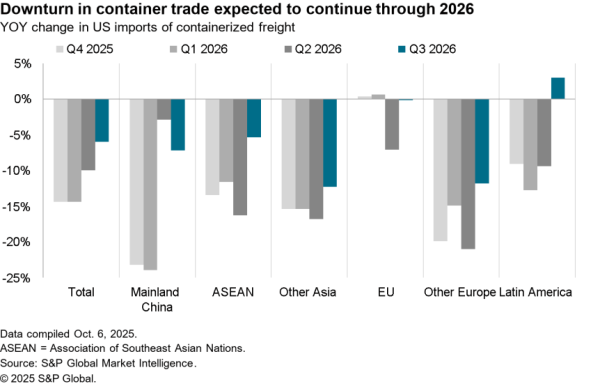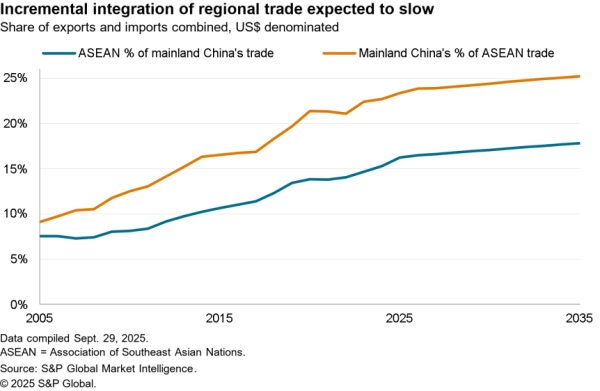The U.S. government may put in place a wide range of tax breaks and subsidies for firms that relocate manufacturing to the U.S. and away from China, Reuters reports. That follows comments made by NEC Director Larry Kudlow that a 50% reduction in the corporate tax rate could be made for firms which relocate manufacturing to the U.S. according to Fox Business.
While such moves are a long way from fruition and would likely need House approval at a time when the budget is already stretched dealing with COVID-19, it may become a firm policy for the Trump administration ahead of the elections.
While there’ll likely be no shortage of potential candidates for support, a logical screen for products might include:
– A high reliance on U.S. imports on China, in order to mitigate the potential for WTO complaints from other countries
– Manufacturing industries that are not overly labor intensive
– Tariffs, including section 301 duties, have not yet led to a major reduction in imports from China
– Significant scale, say imports over $1 billion per year at the HS-4 tariff code level, given the expense of switching manufacturing.
The analysis yields three broad categories of potential candidates. Panjiva’s seaborne import data can then be used to identify importers who may look to onshore production back to the U.S.
Toys – Large gift list, only high-tech wanted
On that basis the largest potential target would be toy manufacturing with 84.2% of U.S. imports, or $12.3 billion of imports from China in 2019. There’s also only been a 2.1 percentage point dip in the proportion of imports from China versus 2016. Yet, many of the products are likely to be heavily labor intensive and would rely on firms including Mattel and Hasbro bringing production in-house. More fruitful would be video-game systems where China represents 79.5% of shipments though Microsoft, Nintendo and Sony would need to work with their contract manufacturers.

Source: Panjiva
Electronics – Get set for set-top boxes
Imports of telecoms and network equipment were the largest category (based on HS-4 tariff codes) with $59.1 billion of imports from China equivalent to 58.9% of the total U.S. imports of the category. There’s evidence of manufacturers being willing to shift away from China including Apple’s move to India outlined in Panjiva’s research of March 3, and Samsung Electronics’ move to Vietnam.
There’s already been a significant move in manufacturing of computers away from China with U.S. imports from China equivalent to 49.7% of the total in 2019 versus 60.8% in 2016. Additionally, the Trump administration has been wary of applying tariffs on laptop computers so far, shown by the categories inclusion in list 4B of section 301 duties. Brand-name importers including Microsoft and HP would face complicated negotiations with contract manufacturers including Wistron.
The most notable shift among consumer electronics has been an increase in the proportion of set-top box imports with 71.8% of imports coming from China in 2019 compared to 51.7% in 2016. Many importers of set-top boxes have nonetheless seen a decline in total imports in the 12 months to April 30 compared to a year earlier in part due to overall lower shipments as well as recent disruptions to manufacturing caused by COVID-19. Imports linked to Arris and Roku fell by 32.9% and 34.0% year over year respectively while those associated with Dish actually increased by 1.9%.

Source: Panjiva
Electricals – Leave a light on for lighting manufacturers
There’s already form for electrical appliance manufacturers to move back to the U.S. with the right incentives. Both Samsung Electronics and LG Electronics have relocated washing machine manufacturing back to the U.S. following the section 201, safeguarding, review of the industry in 2017 that led to a mixture of tariffs and quotas in 2018.
The share of home appliance components sourced from China actually increased to 84.9% of the total in 2019, a rise of 4.9 percentage points compared to 2019. Onshoring would help round out U.S. assembly supply chains with imports of parts carried out by Newell Brands, Samsung Electronics and Spectrum Brands.
Among completed equipment there’s been an increase in the share of imports of microwaves from China to 85.0% from 83.9% with shipments linked to LG Electronics and Electrolux. Less obvious are imports of smaller appliances where China represented 90.8% of imports compared to 82.9% of the total in 2016, including shipments linked to Newell, Tristar Products and Mirama Enterprises.
The widest swing however has come in lighting with imports of bulbs and parts having surged to 74.9% of the total in 2019 from 42.3% in 2016. Leading importers in 2020 included Signify, Ledvance and GE Lighting. Similar to set-top boxes though there’s been a more widespread downturn which has spread with the COVID-19 pandemic’s disruptions to supply chains. Signify and GE down by 42.1% and 51.1% respectively in Q1 while Ledvance bucked the trend with a 58.2% surge.

Source: Panjiva




